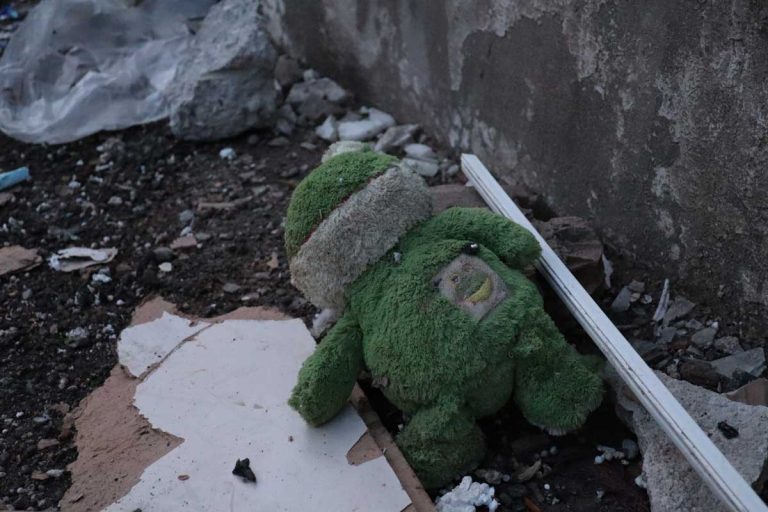The politicization of disaster response creates fatal delays in aid work, as we saw after the 2020 Beirut Port explosion or, more recently, the horrific Kahramanmaras earthquake that hit Turkey and Syria last week. The humanitarian response to the latter event was, heartbreakingly, marred by the complexities and red tape of politics, misinformation, corruption, and exploitation.
A lack of accountability and government ineptitude worsened an already dire situation and slowed the recovery of the impacted areas. Such examples must be a call to arms for nongovernmental actors, aid organizations, and local charities and organizations to streamline their efforts in ways that eliminate the malign influence of political jockeying.
On Monday, February 7th, 2023, two earthquakes of 7.8 and 7.5 magnitudes struck southern and central Turkey and northern and western Syria, just nine hours apart. More than 36,000 people – and counting – have been reported dead in Turkey and over 4,300 in Syria.
Experts predict 26 million people will be displaced or negatively impacted by this event. The earthquakes decimated entire communities and reached as far as Lebanon, Cyprus, Greece, Israel, and the Palestinian territories. Over 6,000 buildings collapsed in Turkey due to the earthquakes, most of which had people and animals trapped inside. Syria also witnessed structural damage, but the exact numbers are unclear due to delays in relief efforts. During a brief news conference in Osmaniye, Turkish President Recep Tayyip Erdogan called the earthquakes “the disaster of the century.”
In Turkey, relief came swiftly and immediately. Around 4,500 search and rescue operations are operating in Turkey, according to Turkish Interior Minister Suleyman Soylu. About 34,700 people are reportedly working on rescue operations. The European Union sent 27 search and rescue teams from 19 countries, comprising 1,150 rescue workers and 70 dogs. Greece, a long-time regional rival of Turkey, sent rescue personnel, dogs, and special equipment, as well as specialists, including structural engineers, doctors, and seismic planning experts.
Lebanon, a country barely standing on its feet, sent soldiers, Red Cross volunteers, first responders, and firefighters. Even Armenia sent aid over the border to Turkey, which has been closed since 1993 due to tensions.
This was certainly not the case across the border in northern Syria until very recently, when too much time had passed. While Turkish roads were gridlocked by the vans and trucks of aid workers and rescue teams, Syrians were left to dig through the rubble with their bare hands or what little equipment they already had. The earthquakes left an already vulnerable population of around 4.1 million people that has suffered 12 years of war and displacement in a desperate place.
In the aftermath of the rescue operations, survivors in Turkey and Syria face new threats, including freezing temperatures and a lack of resources. U.N. Emergency Relief Coordinator Martin Griffiths says they have entered into the “humanitarian phase,” with a focus on providing essential resources like food and water, as well as medical facilities, shelter, schooling, and psychosocial care.
As the situation unfolds for survivors and rescue teams, I can’t help but wonder how we have arrived at a point where humanitarianism is controversial and political. The Kahramanmaras earthquake has unveiled many problematic disaster response and relief areas that need immediate re-evaluation by governmental and non-governmental organizations. Here I’ll focus on four that caught my attention.

Politics
The politicization of natural disaster response creates fatal delays in aid work. The lack of initial relief to Syria has made a horrible situation even worse. Many attribute the lack of aid to Syrian President Bashar Al Assad’s government in Damascus leveraging a natural disaster for political purposes.
From the day the earthquake occurred, the aid response for victims in Syria was divided between the government in Damascus and the opposition groups, namely Hayat Tahrir Al-Sham in the northwest and U.S.-backed Kurdish groups in the northeast, that have held the north for the last decade or so. Victims of the earthquake were caught in the middle, with Al Assad’s government historically resisting aid dispersal that it regarded as “undermining Syrian sovereignty and reducing its chances of winning back control of the region.”
Turkey has de facto control of land in the north and has been supplying aid to millions displaced due to war through the Bab al-Hawa border crossing. Unfortunately, the southern part of Turkey, usually used for distributing aid to Syria, was heavily damaged by the earthquake, disrupting aid deliveries. This essentially put the flow of aid into the hands of the Syrian government in Damascus. A government that bombed parts of northern Syria just hours after the earthquake hit.
Finally, according to the BBC, a few days into the rescue efforts, “Syrian state media reported that the Syrian cabinet had given the go-ahead for the delivery of humanitarian aid to all parts of the country,” co-coordinated between the United Nations, the Syrian Arab Red Crescent, and the International Committee of the Red Cross. In addition, on February 9th, the General Director of the Syrian Civil Aviation Authority (SCAA), Basem Mansour, announced that Syrian airports in Damascus, Aleppo, and Latakia would be able to receive aid from all countries.
The UAE, Russia, Iran, India, Pakistan, Armenia, Algeria, Iraq, Oman, Egypt, Venezuela, Jordan, Libya, and Tunisia sent more than 30 flights carrying vital provisions. The U.S. also lifted sanctions they placed on the Syrian government to curb violence against opposition groups to ensure that aid could be delivered. News of these relief efforts was welcome but also revealed more systemic issues.
The fact that the Syrian cabinet had to give the go-ahead lies at the heart of the controversy. In a humanitarian crisis of this scale, aid should be immediate and uncontroversial. Instead, president Al Assad’s government in Damascus used this horrible event as leverage to achieve political goals and normalize relations.
The Syrian government has vetoed several proposals at the U.N. for additional aid routes to northern Syria from Turkey in the past and initially only allowed supplies to pass through one border crossing at Bab al Hawa. After the earthquakes hit, the narrative spread by the Syrian government blamed the U.S. sanctions for the lack of supplies and relief equipment. They called for a lifting of the sanctions to be able to provide adequate supplies to populations that were impacted. Groups in the North that have been under attack by Al Assad’s government for years became the dangerous bargaining chip he needed to have the sanctions lifted.
Lifting the sanctions seemed necessary to open channels for more aid to enter Syria. Sanctions inherently limit the ability of aid organizations to work with local partners and communities and make it difficult to transfer funds to local organizations, which are often better equipped to respond to the needs of affected populations.
According to my conversations with journalist Ghadi Francis, even popular online financial platforms such as PayPal and GoFundMe, commonly used to raise money for humanitarian causes, were flagging funds going to Syria due to the sanctions (although they removed most blocks when the sanctions were lifted).
However, under the sanctions placed on Syria by the U.S., officially called the Caesar Act, there is no restriction on humanitarian aid. The Act was designed to curb human rights violations and acts of violence on the part of the government, not turn off the tap of humanitarian aid. According to organizations and relief workers in Syria, aid was already coming into Syria.
It’s more likely that the delays caused by Al Assad’s campaign to lift the sanctions left millions of Syrians with meager supplies and almost no relief compared to the efforts in Turkey. Ned Price, a spokesperson for the U.S. Secretary of State, called aid coming from the Syrian government “ironic” and “counterproductive,” considering the violence perpetuated by the government against these northern populations for the last decade. He added that humanitarian actors “need to have access to be able to go back and forth across the border, to deliver humanitarian assistance.”
Misinformation
The actions of the Syrian government are not the only controversial events arising in the aftermath of the earthquakes. In the last week since the two earthquakes took place, misinformation has spread like wildfire. It was ignited by a tweet posted just three days before the earthquakes by Dutch researcher Frank Hoogerbeets from the Solar System Geography Survey (SSGEOS), who predicted a magnitude 7.5 earthquake would take place “sooner or later” in Turkey, Syria, and surrounding countries.
Experts have been scrambling to curb the proliferation of fake news due to other accounts leveraging that prediction to share unscientific information. As a result, many have disavowed Hoogerbeets’ tweet as vague and unscientific. In a crisis, people rely on information to make decisions that can impact their safety and well-being. Unfortunately, misinformation and fake news can spread quickly during a disaster, causing confusion and panic. Misinformation often comes from social media, online and offline media outlets, and even official sources, such as government agencies or law enforcement.
False information can quickly spread on these platforms, especially when people share unverified information. Our moral obligation is to verify and review multiple sources before concluding and sharing information.

Corruption
Providing necessary funding to Syria through donations and other philanthropic means has proved to be alarmingly difficult due to corruption. According to the Washington Post, “foreign governments and many international aid groups avoid routing aid directly through the [Syrian] government, which they have sanctioned for war crimes against its own people. The belief that war profiteers and Syrian officials would pocket aid is widespread.”
Unfortunately, it has become essential to understand which organizations to trust before donating to any cause. In 2019 and 2020, almost 47% of U.N. funding that went into Syria made it into the hands of entities with alleged ties to human rights abuses committed by the Al Assad government. To quote Senior Analyst at the International Crisis Group Dareen Khalifa in Middle East Eye, “[Western countries] don’t want to give Damascus bilateral aid, not because of sanctions but because they rightfully don’t trust Damascus to not massively exploit and deprive other areas.”
Reports of government-blocked aid have surfaced, causing consternation amongst the public about where to donate their money. Many believe the Red Cross, UNICEF, UNHCR, and World Vision are trustworthy sources of disaster relief, with established networks to ensure transparency and accountability. Unfortunately, corruption is rampant in the humanitarian aid sector, and the money does not always arrive where it’s needed.

Exploitation
The response to the earthquakes online, particularly across social media platforms, has exposed another concerning trend: online exploitation of death and destruction to gain attention. Images of the deceased, including children and the elderly, are spread around with little regard for respect or privacy. Raising awareness is vital in these situations, but it does not need to include disrespecting victims and their families.
This aligns with the long-held belief in the media industry that “what bleeds leads.” Violent imagery tends to get more views, shares, and interactions online. Mass desensitization from overexposure to these visuals has created a bizarre generational ability to witness and overlook devastation, making images of the dead just some form of macabre clickbait.
Examining natural disaster response at the level of individuals, governments, and online communities is imperative. We must be vigilant about vetting organizations so everyone knows where they can get accurate information and send funds that will be appropriately allocated.
There should be no contestation regarding when and how to send aid. With innocent people dying due to collapsed buildings and even more freezing to death, the response should be swift and widespread from anyone who can send aid. There is no excuse for entire regions of northern Syrian receiving delayed resources and aid because of politics. In the haunting words of Ibrahim Bakkour, a local council member in Jinderis, a Syrian town abandoned in the early, crucial days of relief work: “There’s no political argument here; it’s a humanitarian situation, and we need help.”









